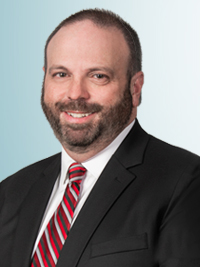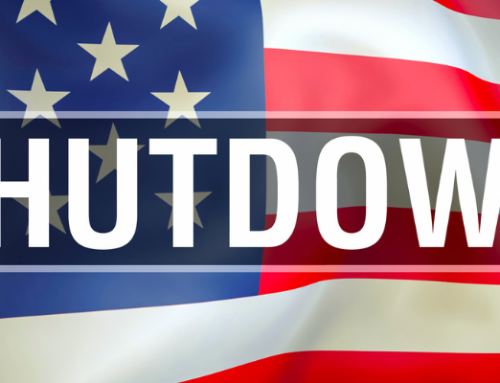Key points covered in this article:
- The IRS has released a preliminary list of 68 occupations eligible for the new “No Tax on Tips” deduction, a temporary tax break under the One Big Beautiful Bill Act (OBBBA), effective from 2025 to 2028.
- Eligible workers in tipped occupations earning under $150,000 annually ($300,000 for joint filers) can exclude up to $25,000 of tip income from federal income tax, though payroll taxes and state/local taxes may still apply.
- The deduction aims to provide tax relief for tipped workers across industries like food service, entertainment, hospitality, and personal care, with ongoing updates and compliance requirements expected from the IRS.
The IRS published a preliminary list of occupations that qualify for the new “No Tax on Tips” deduction, a temporary tax break created under the One Big Beautiful Bill Act (OBBBA).
Signed into law on July 4, 2025, the provision allows eligible workers in regularly tipped occupations to exclude certain tip income from federal income tax for tax years 2025 through 2028. Treasury officials said the list may be revised through future guidance or public comment.
How the Deduction Works
The “no tax on tips” deduction applies retroactively to all of 2025 and is scheduled to remain in effect through 2028. To qualify, a worker must be employed in one of the listed occupations and earn less than $150,000 per year, or $300,000 for married couples filing jointly. The maximum amount of tip income that can be excluded is $25,000 annually.
Tips must be voluntary to qualify. Mandatory service charges or gratuities added by an employer remain taxable wages. The deduction also does not reduce payroll taxes such as Social Security and Medicare, and it will not automatically apply to state or local income taxes unless those jurisdictions choose to conform.
Workers involved in specified service trades or businesses (SSTBs), as defined under Section 199A, are excluded. This applies to both self-employed individuals and employees whose employers operate in SSTB fields such as law, medicine, or consulting.
According to White House estimates, the average qualifying worker could see an annual tax savings of approximately $1,300. However, Treasury officials acknowledged that some occupations on the list do not typically receive tips, which could reduce the value of the deduction for those workers.
Eligible Occupations
Treasury’s list covers 68 occupations across food service, entertainment, hospitality, home services, personal care, personal appearance, recreation, and transportation.
Food & Beverage Service. This category covers the most familiar tipped occupations in restaurants and hospitality. It includes bartenders and sommeliers, wait staff such as servers, cocktail waitresses, and dining car servers, as well as non-restaurant servers like room service attendants, boat hoppers, and beer cart attendants. Dining room attendants and bartender helpers, including bussers and barbacks, also qualify. The list extends to chefs, cooks, and food preparation workers such as sandwich makers, along with fast food and counter workers like baristas and ice-cream servers. The list also specifically includes dishwashers, host staff, and several types of bakers.
Entertainment & Events. As expected, the list includes many workers in the entertainment sector. Eligible jobs include gambling dealers, change persons, and cage workers, along with sports book writers, bingo workers, and keno runners. Dancers, musicians, singers, and DJs are included, although radio DJs are excluded. Other performers such as comedians, magicians, and street entertainers qualify as well. Digital content creators, including streamers, influencers, and podcasters, made the list, a surprise to many observers. Ushers, ticket takers, and attendants in locker rooms, coatrooms, and dressing rooms are also covered.
Hospitality & Guest Services. Traditional guest service roles are included in the deduction. Baggage porters, bellhops, and concierges qualify, as do hotel, motel, and resort desk clerks. Maids and housekeeping cleaners are also listed among the eligible occupations.
Home Services. The IRS extended eligibility to several home service occupations. Home maintenance and repair workers qualify, as do landscapers, groundskeepers, and tree trimmers. Electricians, plumbers, and HVAC technicians are included, along with home appliance installers and repairers. Home cleaning service workers such as house cleaners, pool cleaners, and window washers also qualify, in addition to locksmiths and roadside assistance workers.
Personal Services. A variety of personal service roles are listed as eligible. These include personal care aides, companions, butlers, and valets. Private event planners, photographers, videographers, and wedding officiants are also covered. Pet care workers, including groomers, walkers, and kennel workers, are included. Tutors, nannies, and babysitters round out this category.
Personal Appearance & Wellness. Many jobs in the personal appearance and wellness industries are on the list. Skincare specialists, estheticians, massage therapists, barbers, hair stylists, and cosmetologists qualify, as do shampooers, manicurists, and pedicurists. Technicians who provide eyebrow threading and waxing are included, along with makeup artists. Fitness instructors, yoga teachers, and personal trainers are covered, as are tattoo artists and piercers. Tailors, shoe repairers, and leather repair workers are also eligible.
Recreation & Instruction. Occupations connected to recreation and teaching are also eligible. Golf caddies qualify, as do self-enrichment teachers such as piano, art, and dance instructors. The list includes recreational and tour pilots, as well as tour guides and travel guides. Sport instructors qualify too, provided their work is primarily recreational.
Transportation & Delivery. The transportation and delivery sector features several occupations on the list. Parking attendants and valet attendants qualify, as do taxi drivers, rideshare drivers, and chauffeurs. Shuttle drivers, delivery workers for pizza, grocery, and package services, and car washers, detailers, and boat waxers are included. Private and charter bus drivers, water taxi operators, and charter boat workers also make the list, as do rickshaw, pedicab, carriage drivers, and home movers.
Reporting and Compliance
Although the new deduction takes effect in 2025, workers will still see tip income reported and taxed on their W-2s during the first year. Employers are expected to continue tracking all reported tips as usual. The deduction will be claimed when workers file their tax returns for 2025. Starting in 2026, the IRS is expected to revise Form W-2 to reflect the change. A new code will be added for qualified tips, along with an occupation code to confirm eligibility. A draft form 1040 was released in mid-September that covers temporary tax changes, including the “no tax on tips” provision.
Employers may want to revisit their tipping procedures, particularly if they rely on service charges instead of traditional tipping. Under current rules, mandatory charges do not qualify for the deduction. Payroll taxes on tips will also remain in place.
Looking Ahead
OBBBA rolled out many permanent changes to the tax code. However, the “no tax on tips” deduction is scheduled to expire after 2028. It’s been described as a temporary relief provision, and its long-term future remains uncertain. For now, both employers and employees will want to maintain accurate records and watch for additional IRS guidance. For more information on this tax provision or any other accounting issues, contact PBMares Tax Partner Charles Dean Smith, Jr





